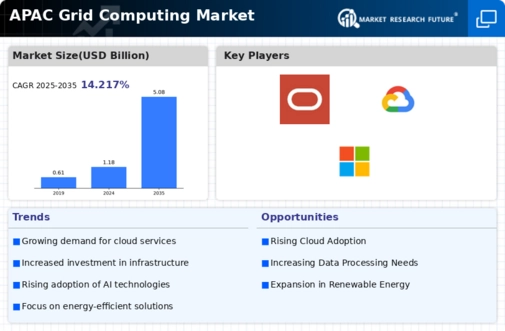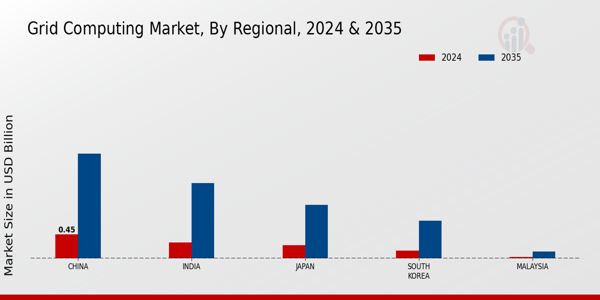The APAC Grid Computing Market has witnessed substantial growth and transformation over recent years, driven by advancements in technology and the increasing demand for efficient data processing and resource management across various industries. The competitive landscape in this market is shaped by numerous players, each bringing unique strengths and innovative solutions to the table.
With the growing importance of big data analytics, cloud computing, and emerging technologies, companies in the region are vying for dominance by offering sophisticated grid computing solutions that optimize computational power and improve operational efficiency.
The focus areas for these companies include enhancing system performance, security, and scalability, while also catering to the specific needs of a diverse array of sectors including finance, healthcare, and telecommunications. This dynamic environment underscores the potential for intense competition, as established players and emerging startups alike seek to carve out significant market shares.
In the APAC Grid Computing Market, Oracle stands out due to its robust portfolio of cloud and on-premises solutions that are designed to meet the computational needs of organizations across various sectors. Oracle leverages its extensive experience in database management systems to provide scalable and high-performance grid computing solutions that enable businesses to maximize their operational efficiency.
The company has a well-established presence in the region, supported by strategic partnerships and collaborations aimed at enhancing its service offerings. Oracle’s strengths lie in its advanced technology stack, including its robust infrastructure, integrated applications, and commitment to innovation.
This positioning allows Oracle to cater to the diverse requirements of industries such as finance and telecommunications, thus enabling organizations to leverage big data and analytics in their decision-making processes.





